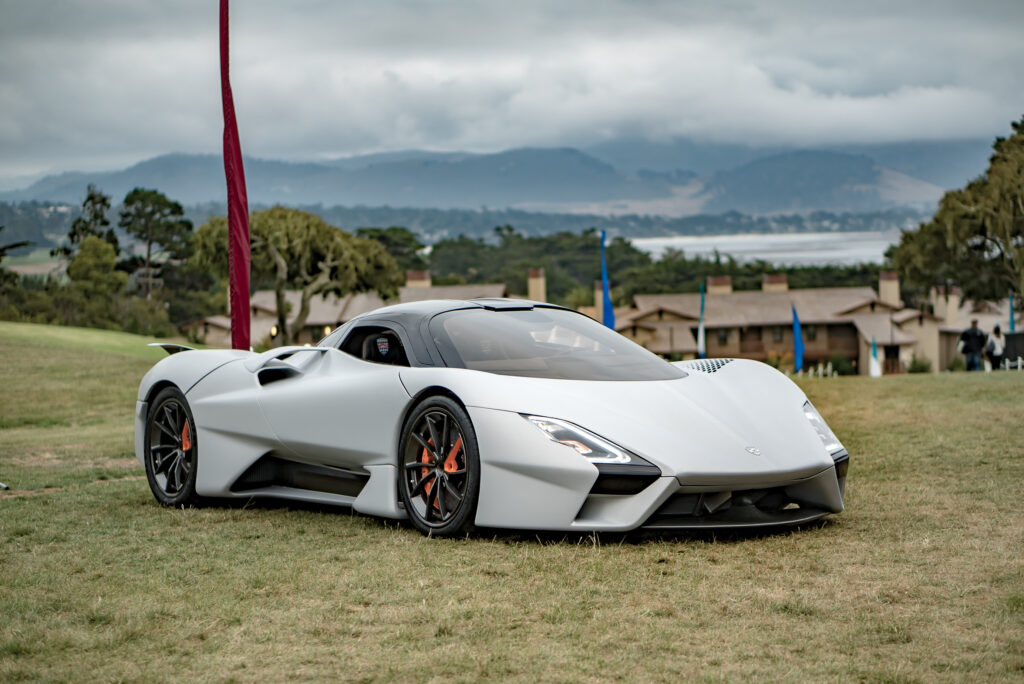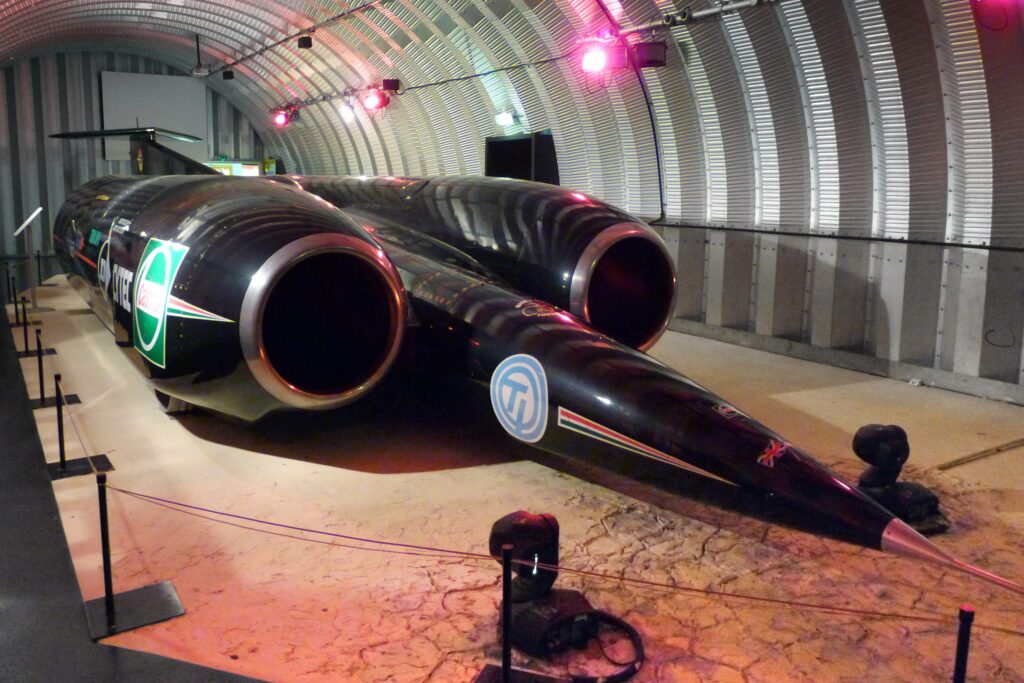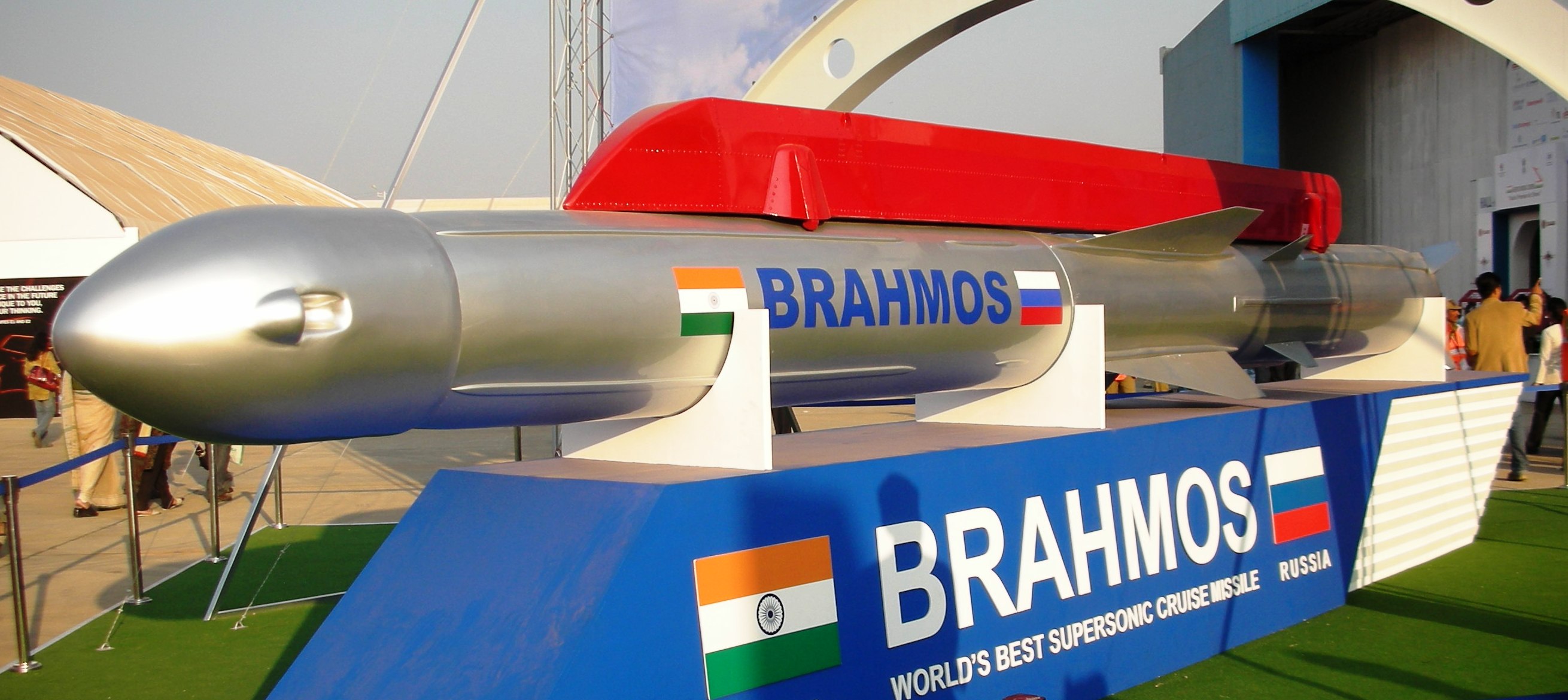
Our fascination with speed is as old as humanity itself. From the moment we first observed a swift predator or felt the rush of wind, the drive to achieve, measure, and surpass velocity has fueled innovation and pushed the boundaries of what is possible. This relentless pursuit has led to astounding breakthroughs, transforming everything from how we travel to how we process information.
Today, we live in a world where limits are constantly being challenged. Engineers, athletes, and scientists alike are meticulously honing their crafts, leveraging cutting-edge technology and sheer determination to shave off milliseconds or add miles per hour. This quest for ultimate velocity isn’t just about breaking records; it’s about understanding fundamental principles and applying them to create astonishing feats of performance.
In this comprehensive exploration, we embark on a journey through some of the most spectacular speed records ever set. We’ll begin by diving into humanity’s incredible engineering achievements, examining how our ingenuity has produced vehicles, systems, and devices that redefine what ‘fast’ truly means across various domains.

1. **Fastest Production Car – SSC Tuatara**
When it comes to the pinnacle of street-legal automotive performance, the SSC Tuatara stands as a formidable champion. This exclusive sports car, hailing from SSC North America in Richland, Washington, has etched its name into the record books as the world’s fastest production vehicle, a title that commands respect in the hypercar community.
The Tuatara secured its official record on January 27, 2021, achieving an astonishing two-way average speed of 282.9 mph (455.3 km/h) at the Space Florida Launch and Landing Facility. This meticulously verified run, confirmed by automotive testing firm Racelogic, decisively broke the previous benchmark held by the Koenigsegg Agera RS, setting a new standard for top-tier velocity.
It is worth noting that the path to this record was not without its challenges. The Tuatara’s journey involved three attempts to surpass the Koenigsegg Agera RS’s 277 mph record from 2017. An earlier attempt reportedly claimed a top speed of 316 mph, but this figure was later refuted by several independent sources, underscoring the rigorous verification process required for such high-stakes records.
Beyond the official two-way average, the Tuatara has also demonstrated its raw power in other contexts. In May 2022, Larry Caplin pushed his Tuatara to an impressive 295 mph during a uni-directional top-speed run over a distance of 2.3 miles, again at Space Florida’s Launch and Landing Facility. These achievements solidify the SSC Tuatara’s status as a marvel of modern automotive engineering, pushing the boundaries of what’s possible in a production vehicle.
Read more about: The 12 Fastest Performance Vehicles Ranked by 0-60 MPH Time: An In-Depth MotorTrend Analysis

2. **Fastest Non-Production Car – ThrustSSC**
Stepping beyond the realm of road-legal machines, the ThrustSSC represents an entirely different echelon of speed, holding the absolute land speed record. This purpose-built vehicle, short for Thrust SuperSonic Car, is not just about raw velocity; it made history as the first land vehicle ever recorded to break the sound barrier, an achievement that captivated the world.
The historic record was set on October 15, 1997, in the vast expanse of the Black Rock Desert, Nevada. Piloted by the highly skilled Royal Air Force pilot, Wing Commander Andy Green, the ThrustSSC achieved an astounding top speed of 763 mph (1,228 km/h), a figure that continues to stand as a testament to extreme engineering and human courage.
The sheer power behind this land speed titan came from two Rolls-Royce Spey turbofan engines. These formidable powerplants, originally designed for British F-4 Phantom II jet fighters, collectively unleashed a staggering 102,000 brake horsepower. Such immense thrust was necessary to propel the vehicle to speeds unimaginable for conventional wheeled transport.
ThrustSSC remains an iconic symbol of the relentless pursuit of speed, demonstrating how specialized design and unbridled power can overcome aerodynamic and mechanical challenges to push the limits of land travel. Its record-breaking run wasn’t just a number; it was a pioneering moment in the history of high-speed engineering.
Read more about: The Fastest SUVs on the Road

3. **Fastest Helicopter – Bell Boeing V-22 Osprey**
In the challenging domain of vertical flight, the Bell Boeing V-22 Osprey stands out not only for its unique design but also for its exceptional speed. This advanced military aircraft defies conventional categorization, ingeniously combining the vertical takeoff and landing (VTOL) capabilities of a typical helicopter with the long-range and high-speed advantages of a fixed-wing turboprop aircraft.
The V-22 Osprey’s impressive performance is powered by two Rolls-Royce T406-AD-400 engines, also known as AE 1107C-Liberty engines, each delivering a robust 6,150 hp or shaft horsepower. This dual-engine configuration is crucial for its distinctive tiltrotor operation, allowing it to transition seamlessly between helicopter-like hovering and fixed-wing flight.
When operating as a fixed-wing aircraft, the V-22 Osprey can achieve a remarkable maximum speed of 351 mph (305 knots) at 15,000 feet, with a maximum cruise speed of 306.1 mph. These figures are not only outstanding for a rotorcraft but also place its speed in a league comparable to some larger military transport aircraft, such as the Lockheed C-130, and it can easily outrun conventional helicopters.
One of the most innovative aspects of the V-22 is its ability to tilt its engine nacelles up to 80 degrees for quick takeoffs and to efficiently reach high altitudes and fast speeds. The advanced control systems are so sophisticated that the aircraft can hover stably even in less-than-ideal wind conditions, freeing the pilot from constant manual steering inputs and showcasing a truly pioneering approach to aviation.
Read more about: The Fastest SUVs on the Road

4. **Fastest Commercial Train – Shanghai Maglev**
For those seeking an unrivaled ground travel experience, the Shanghai Maglev offers a glimpse into the future of high-speed rail. This groundbreaking system is not merely a train; it is the world’s oldest and fastest commercial electric train, operating in Shanghai’s Pudong district in China, offering breathtaking speed and efficiency to its passengers.
The Shanghai Maglev is capable of reaching truly remarkable speeds, with its top operational speed clocking in at approximately 268 miles per hour (431 km/h). This incredible velocity is achieved through magnetic levitation technology, where the train floats above the tracks, eliminating friction and allowing for unprecedented speeds.
The development of this ambitious project, also known as Shanghai Transrapid, required a significant investment and considerable effort. The construction of its two 18.9-mile (30.5 km) long tracks and terminals cost US$1.33 billion and took over two and a half years to complete, highlighting the complexity and scale of introducing such advanced transportation infrastructure.
The engineering prowess behind the Shanghai Maglev is a testament to international collaboration. The train sets themselves were built through a joint effort between two prominent German companies, Siemens and ThyssenKrupp. Furthermore, another German firm, Vahle. Inc., played a crucial role in the electrification of the entire line, ensuring the seamless and powerful operation of this world-leading commercial rail system.
Read more about: The Fastest SUVs on the Road

5. **Fastest Boat – Spirit of Australia**
When the quest for speed extends to water, the Spirit of Australia stands alone, holding the undisputed world water speed record. This extraordinary wooden speed boat was meticulously designed and built by Australian motorboat racer Ken Warby in the 1970s, specifically with the singular purpose of conquering the water speed challenge.
On October 8, 1978, Ken Warby piloted his Spirit of Australia to an official world record on the Tumut River in New South Wales, Australia. He achieved an astonishing speed, clocking over 275.98 knots, which translates to an incredible 317 mph. This record has remained unbroken for decades, cementing the boat’s legendary status.
Intriguingly, sources suggest that Warby may have even surpassed his own record a year later, reaching a speed of 300 knots (344 mph) at the same location. However, this even faster run was not officially recorded, adding a layer of mystique to the boat’s already impressive history and Warby’s audacious pursuit of speed.
The power behind the Spirit of Australia came from a single Westinghouse J34 jet engine. This engine, a robust piece of machinery from the 1940s and 50s, was originally utilized in various jet fighters and served as a supplementary powerplant in larger aircraft like the Lockheed P2 Neptune. Its adaptation for water speed record-breaking perfectly exemplifies creative engineering in the pursuit of velocity.
Read more about: Why 2025 Compact Trucks Are Igniting Urban Interest: A Deep Dive for Savvy Buyers

6. **Fastest Roller Coaster – Formula Rossa in Abu Dhabi**
For thrill-seekers and adrenaline junkies, the Formula Rossa offers an unparalleled experience, proudly holding the title of the world’s fastest roller coaster. Located within the magnificent Ferrari World amusement park in Abu Dhabi, UAE, this steel-launched coaster delivers a ride that is as exhilarating as it is rapid.
Manufactured by Intamin and inaugurated on November 4, 2010, Formula Rossa is engineered for pure speed. It can achieve a maximum speed of 149.1 mph (240 km/h), a figure that places it approximately 21 miles per hour faster than its closest rival, Kingda Ka. This blistering pace ensures an unforgettable, high-octane adventure for every rider.
The secret to its extraordinary acceleration lies in its modern hydraulic launch system. This sophisticated mechanism allows the coaster to catapult riders from a standstill to its maximum speed in an astonishing 4.9 seconds. Such rapid acceleration generates a powerful sensation, subjecting riders to 4.8 G-force throughout the journey, simulating the intense forces experienced by Formula 1 drivers.
Formula Rossa is not just a ride; it is a testament to how advanced engineering and daring design can translate pure speed into an incredible recreational experience. It pushes the boundaries of amusement park attractions, delivering a dose of extreme velocity that is both thrilling and meticulously controlled.
Read more about: The Fastest SUVs on the Road

7. **Fastest Cruise Missile – BrahMos**
In the realm of defense technology, the BrahMos cruise missile stands as a testament to exceptional speed and precision. Hailing from India, this medium-range cruise missile utilizes a ramjet engine, allowing it to maintain supersonic speeds throughout its entire flight trajectory. It is widely renowned for being the fastest supersonic cruise missile globally, a critical advantage in modern military applications.
The BrahMos is capable of reaching incredible speeds, achieving a maximum velocity of Mach 3.5. This formidable speed significantly reduces the time available for an adversary to react, making it exceptionally difficult to intercept. Its design prioritizes both velocity and accuracy, making it a highly effective weapon system.
One of the most significant strengths of the BrahMos missile is its remarkable versatility in terms of launch platforms. It can be deployed from a wide array of military assets, including fighter aircraft, naval ships, submarines, and Transporter-Erector-Launcher (TEL) vehicles on land. This multi-platform capability enhances its strategic value and operational flexibility considerably.
Looking to the future, an even more advanced, hypersonic version of the missile, designated BrahMos-II, is currently under development. This next-generation missile is projected to achieve even higher speeds, ranging impressively between Mach 7 and Mach 8. Such advancements underscore the continuous push for greater speed and capability in defense technology, ensuring that BrahMos remains at the forefront of missile development.”
, “_words_section1”: “1940
Our journey through the world’s fastest phenomena now transitions from human engineering marvels to the breathtaking speeds found in the natural world, alongside some extraordinary human athletic benchmarks and the ultimate processing capabilities of our technology. Here, we unveil seven more incredible examples where velocity redefines what is possible, whether driven by evolution, human determination, or advanced computational power.

8. **Fastest Man – Usain Bolt**.
When we speak of sheer human velocity, one name undeniably springs to mind: Usain Bolt. This retired Jamaican athlete is widely recognized as the greatest sprinter of all time, a true legend of the track. His remarkable career boasts an impressive eleven world championship titles and eight Olympic gold medals across the 100-meter, 200-meter, and 4 x 100-meter relay events, cementing his legacy in athletic history.
Bolt’s most iconic achievement came at the 2009 World Championships, where he shattered his own 100-meter world record, crossing the finish line in an astonishing 9.58 seconds. Not content with just one record, he also set a new 200-meter benchmark of 19.19 seconds at the very same event, demonstrating an unparalleled mastery of short-distance speed. These records highlight a level of performance that pushed the boundaries of human capability.
Beyond his incredible athletic prowess, Usain Bolt transcended the realm of sports to become a global icon. His charismatic personality, the instantly recognizable “Lightning Bolt” celebratory pose, and his engaging interactions with both fans and fellow athletes endeared him to millions worldwide. He embodied the spirit of competition with a flair that made track and field a must-watch event.
While Usain Bolt’s speeds are phenomenal for a human, it’s a humbling thought that in the grand scheme of the fastest creatures on Earth, even his lightning pace might seem like a slowpoke compared to some of the natural record-holders we’ll explore. This comparison only serves to underscore the vast spectrum of velocity found across our planet, from the human sprint to the apex predators of the animal kingdom.
Read more about: The Shocking Multi-Million Dollar Insurance Policies Protecting Top Soccer Players’ Legs and Other Athletic Assets

9. **Fastest Woman – Florence Griffith-Joyner**
In the annals of women’s athletics, Florence Griffith-Joyner stands alone as the fastest woman ever recorded, a title she earned through astounding performances that continue to inspire. Her records, set with a distinctive blend of speed and style, have proven incredibly resilient against the passage of time and the advancements in sports science. She was a true pioneer, leaving an indelible mark on the sport of track and field.
It was at the 1988 U.S. Olympic trials that Griffith-Joyner etched her name into history, completing the women’s 100-meter race in an astonishing 10.49 seconds. This world record remains unchallenged, a testament to her unparalleled speed on that fateful day. Her performance wasn’t just a marginal improvement; she broke the previous record, held by the esteemed 1984 Gold medalist Evelyn Ashford, by a remarkable 0.27 seconds, signifying a monumental leap in sprint performance.
Her dominance wasn’t limited to a single event. In the same Olympic trials, Griffith-Joyner also set an astounding 200-meter record of 21.34 seconds, another benchmark that has yet to be surpassed. Her incredible talent culminated in the 1988 Olympic finals, where she soared to victory, securing gold medals in three prestigious track and field events: the 100m, 200m, and the 400m relay races. She completed the 100-meter sprint in the finals with an equally impressive time of 10.54 seconds.
Florence Griffith-Joyner’s unique combination of blistering speed, distinctive fashion, and captivating presence made her a global superstar. Her records continue to serve as a high watermark for aspiring athletes, underscoring the extraordinary human potential for speed and the enduring legacy of a true athletic icon.
Read more about: Beyond the Redline: A MotorTrend Exploration of Earth’s Ultimate Speed Machines and Natural Wonders

10. **Fastest Land Animal – Cheetah**
When the conversation turns to speed on land, there’s simply no disputing the undisputed champion: the cheetah. Over short distances, these magnificent felines can unleash an incredible burst of speed, sprinting at a top velocity estimated between 68-75 mph (80-120 km/h). What’s truly astounding is their acceleration, as they can go from a standstill to 60 mph in under three seconds, a feat that rivals or even surpasses most high-performance production cars.
This remarkable speed is no accident of nature; it’s facilitated by a suite of physical adaptations perfectly engineered for velocity. Cheetahs possess a slender, muscular body, long and agile legs, and an elongated tail that acts as a crucial counterbalance, allowing for incredible agility and stability during high-speed chases. Their non-retractable claws provide superior grip, much like running spikes, further enhancing their traction.
While various estimates for their top speed exist, the most reliably and rigorously recorded speeds for cheetahs typically fall between 93 and 98 km/h (58 and 61 mph). These figures, often obtained through meticulous scientific observation, confirm their status as the fastest land animal, showcasing an evolutionary pinnacle of predatory pursuit.
Beyond the raw numbers, the cheetah’s speed is a critical tool for survival in the harsh African savannah. It enables them to effectively hunt prey such as impalas and gazelles across wide-open areas. However, this explosive speed comes with a trade-off: endurance is limited, with most cheetahs sustaining their top speeds for only about 60 seconds at a time. Interestingly, when sprinting, they spend more time airborne than on the ground, a unique aspect of their powerful stride.
Read more about: Nature’s Mavericks: 11 Animals That Seem to Shatter the Laws of Physics

11. **Fastest Bird – Peregrine Falcon**
Dominating the skies with unparalleled aerial agility and blistering speed, the peregrine falcon holds the prestigious title of the fastest bird, especially renowned for its distinctive and deadly “hunting stoop.” This large falcon species, typically measuring between 13 to 23 inches in body length with a wingspan of up to 47 inches, is a master of high-speed dives, a spectacle of nature’s raw power.
The peregrine falcon’s most iconic display of velocity occurs during its hunting stoop, a steep, controlled dive from considerable heights towards unsuspecting prey. It is during these breathtaking descents that the falcon achieves its maximum airspeeds, consistently exceeding 200 mph. National Geographic has notably documented the highest recorded speed for a peregrine falcon during such a hunting stoop at an astounding 242 mph (389 km/h), making it a true aerial projectile.
This specialized hunting technique involves a precise combination of aerodynamics and gravitational acceleration. The falcon positions its body to minimize drag, tucking its wings tight against its body to become a living missile. The incredible G-forces experienced during these dives are immense, yet the peregrine falcon is perfectly adapted to withstand them, showcasing an evolutionary marvel in avian design and hunting strategy.
While other birds, such as the white-throated needletail, might be faster in horizontal flight, the peregrine falcon’s diving speed remains unmatched, solidifying its position as the ultimate avian speed demon. Its ability to harness gravity and aerodynamics for such extreme velocity is a testament to the diverse ways nature has optimized speed for survival.
Read more about: Nature’s Mavericks: 11 Animals That Seem to Shatter the Laws of Physics

12. **Fastest Fish – Sailfish**
In the vast expanse of the world’s oceans, the sailfish reigns supreme as a contender for the title of the fastest marine animal. A prominent member of the billfish family, Istiophoridae, this species is instantly recognizable by its spectacularly large dorsal fin, which resembles a sail, and a distinctive, spear-like bill extending from its upper jaw. Primarily found in warmer, tropical seas, its sleek physique is perfectly adapted for hydrodynamic performance.
While its status as the universally accepted fastest marine animal is debated by some, the sailfish is undeniably one of the quickest fish species over short distances, showcasing incredible bursts of acceleration. Early studies in the mid-20th century estimated that the Atlantic sailfish could achieve a maximum speed of 68 mph in these short, explosive sprints, a figure that has been widely cited across various sources and popular accounts.
However, recent scientific investigations, such as a study conducted in 2015, have proposed a more conservative estimate for the sailfish’s maximum swimming speed, suggesting it might be no higher than 10 meters per second, or approximately 22 mph. Despite this academic discussion, the sailfish continues to be popularly recognized for its impressive speed, a testament to its observed agility and power in the water.
Beyond its velocity, the sailfish is also highly prized as a game fish, sought after by anglers for its challenging fight and impressive stamina. Its combination of a sharp bill, remarkable speed, and sustained endurance makes it a formidable quarry, particularly in renowned fishing grounds like the Great Barrier Reef, as well as across the Indian and Pacific Oceans.
Read more about: Nature’s Mavericks: 11 Animals That Seem to Shatter the Laws of Physics

13. **Fastest Spacecraft – NASA’s Parker Solar Probe**
Pushing the boundaries of human-made velocity, NASA’s Parker Solar Probe stands as an unparalleled achievement in space exploration, holding the record as the fastest human-made object ever constructed. Launched in 2018 with the audacious mission to closely study the outermost layer of the Sun, known as the corona, it is the first spacecraft to ever venture directly into this extreme solar environment.
On April 29, 2021, the probe made a historic close approach to the solar surface, coming within a mere 6.5 million miles (10.5 million kilometers) – a staggering feat considering the Earth-Sun distance is approximately 93 million miles. During this pivotal phase, the Parker Solar Probe achieved a maximum velocity of 150 kilometers per second (equivalent to 93 miles per second) relative to the Sun, demonstrating the incredible speeds required for such a daring celestial rendezvous.
Yet, this is just a chapter in its ongoing mission. According to its meticulously planned flight trajectory and mission profile, the Parker Solar Probe is slated to make even closer approaches to the Sun’s surface during its final stages, aiming for distances between 3.8 to 4.3 million miles by the end of 2025. With each gravitational assist from Venus and plunge towards the Sun, its anticipated total velocity is projected to exceed an astounding 190 km/s.
This incredible speed translates to approximately 0.064% of the speed of light, an engineering marvel that defies imagination. The Parker Solar Probe is not merely a fast object; it is a testament to humanity’s relentless pursuit of knowledge, designed to withstand extreme conditions and provide unprecedented insights into our star’s mysterious corona, pushing both technological limits and our understanding of the universe.
Read more about: I’m a Race Driver: 7 Apex Machines Pushing the Limits of Speed and Engineering

14. **Fastest Supercomputer – Frontier in USA**
Crossing into the realm of computational velocity, the Frontier supercomputer, housed in the USA, has redefined what’s possible in high-performance computing. Earning the title of the world’s fastest supercomputer upon becoming operational in 2022, Frontier represents a monumental leap forward, capable of executing operations at speeds previously thought unimaginable, propelling scientific discovery into new frontiers.
Frontier’s staggering performance is underpinned by a massive and complex architecture. It is powered by an array of 9,472 AMD Epyc Trento CPUs, with each processor boasting 64 cores running at 2 GHz, culminating in a colossal total of 606,208 CPU cores. Complementing this, it integrates 37,888 Radeon Instinct MI250X GPUs, collectively providing an astonishing 8,335,360 GPU cores. This synergy of processors enables it to achieve a mind-boggling performance of 1.102 exaFLOPS, which translates to 1.102 quintillion operations per second.
Such incredible processing power is matched by an equally formidable high-speed storage system. Frontier boasts a staggering 75 terabytes per second for reading data, 35 terabytes per second for writing data, and the capability to handle an astonishing 15 billion input/output operations per second. This ensures that the massive amounts of data generated and processed can be managed without bottlenecks, maintaining the system’s unparalleled efficiency.
While its power consumption is substantial, drawing 21 megawatts – slightly more than its predecessor Summit’s 13 megawatts – the energy expenditure is a necessary investment for the insights it provides. Frontier is an indispensable tool for scientists and engineers worldwide, enabling them to tackle some of the most complex problems and simulations across diverse fields, from climate modeling and materials science to advanced medical research, constantly pushing the boundaries of what computational analysis can achieve.
From the explosive acceleration of a cheetah to the breathtaking speed of a peregrine falcon’s dive, and from the unparalleled human athletic achievements of Usain Bolt and Florence Griffith-Joyner to the cutting-edge velocity of NASA’s Parker Solar Probe and the computational might of the Frontier supercomputer, our journey through speed has been nothing short of awe-inspiring. We’ve witnessed how both nature and human ingenuity consistently redefine the limits of what’s possible. Each record, whether biological or technological, serves as a testament to the relentless drive to innovate, to explore, and to understand the profound dynamics of our world, reminding us that the quest for ultimate velocity is a never-ending saga of discovery and achievement.



